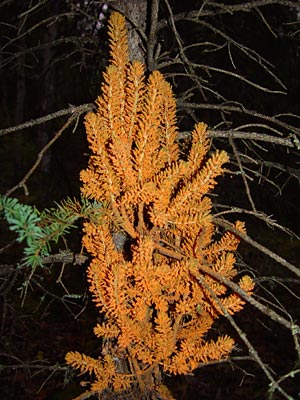 |
 |
 |
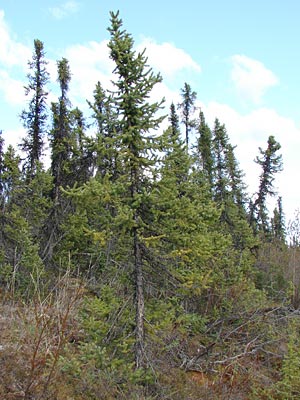
1. Typical stunted black spruce on permafrost.
|
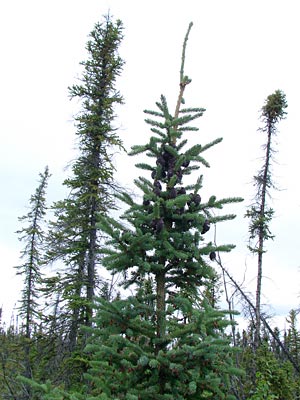
2. Late July photo showing struggling black
spruce trees. Young spruce in foreground has
new cones near the top with smaller dried
male cones below.
|

3. Late May photo of a robust pair of black spruce
growing in an area of discontinuous permafrost.
Buds in the treetops will soon produce new
cones and stems with needles.
|
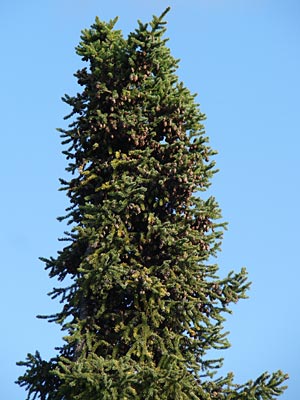
4. Twin-topped black spruce with cones.
Note the extra stem on the left visible in the
large photo
|
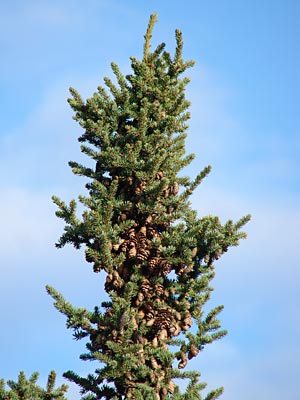
5. There are cones from several years present
in this treetop photographed in late may
including unopened cones from last year.
|

6. A young black spruce in a favorable location
with old cones, male cones (red) at an early
stage and leaf buds.
|

7. Black spruce surrounded by paper birches
in an area not subject to permafrost.
|
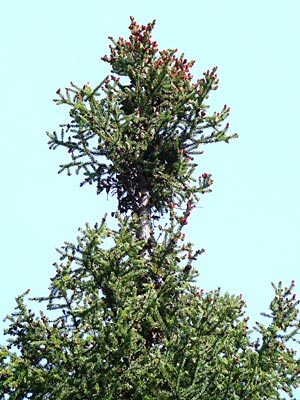
8. Closer view of the spruce at
the left with
female cones especially at the top. There are
a few of the smaller male cones near the bottom
of the photo
|
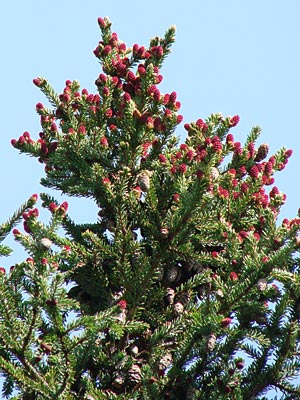
9. Extreme telephoto shot of the top of the
spruce at the left.
|
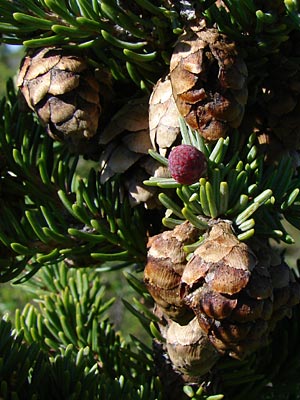
10. Female cone just out of bud stage
surrounded by older cones.
|

11. Female cones with bud scales clinging
to some. Also leaf buds.
|
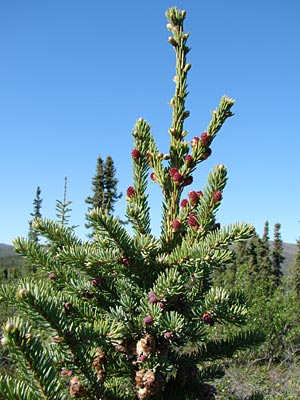
12. Female cones just out of the bud stage above
with an area of male cones below.
|
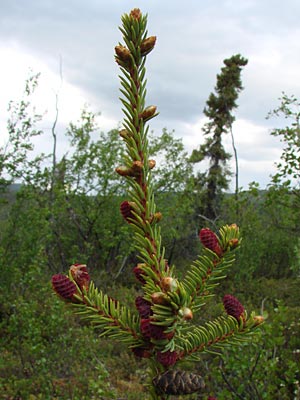
13. Female cones and leaf buds in mid-June.
|
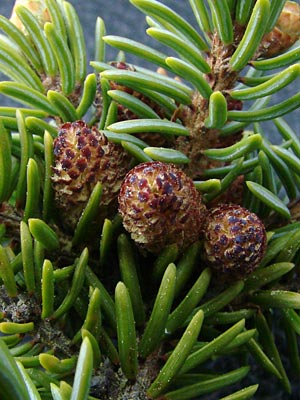
14. Male cones in mid-June.
|
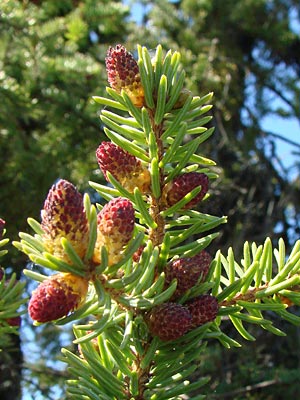 15. Male Cones with pollen in mid-june.
15. Male Cones with pollen in mid-june.
|

16. An older photo of the male spruce cone
opening. The red color will fade.
|
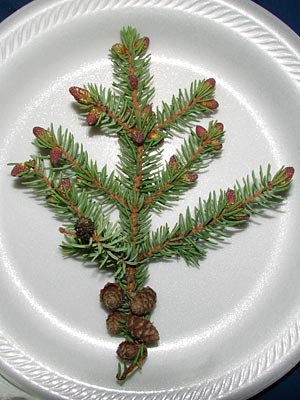
17. Branch with male cones and last year's
mature female cones below.
|

18. Female cones with dripping sap in late
June. The new needles have not yet spread.
|
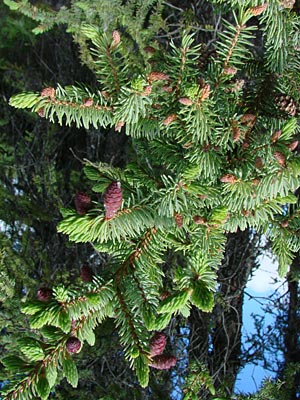
19. Male and Female cones on a side branch.
In this case the male cone is above the
female and has begun to dry.
|
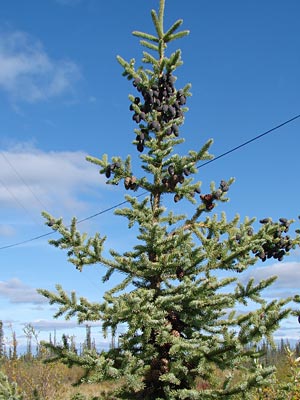
20. Late August picture of mature cones. Note
cones at end of branch lower on tree.
|

21. Closeup photo of cones on tree at left.
Dark mature cones are typical of this species.
|
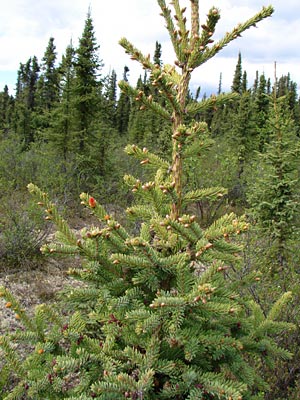
22. Young black spruce growing in thin layer
of soil above granite bedrock. Note strange
cone-like structure at mid-left.
|
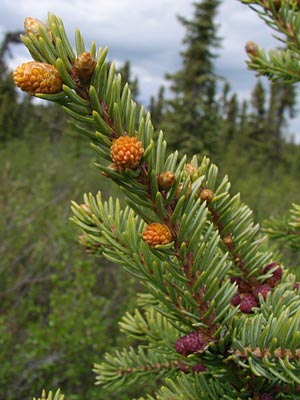
23. Similiar discoloration on what appear to be
leaf buds.
|

24. Closeup of affected cone-like structure and
affected leaf bud below.
|
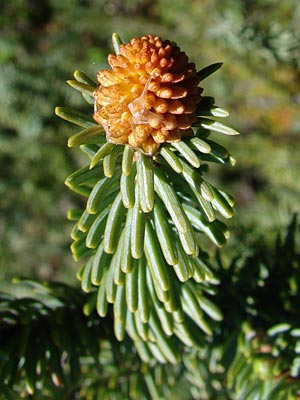
25. Closeup of affected bud
|

26. Normal expanding leaf buds.
|
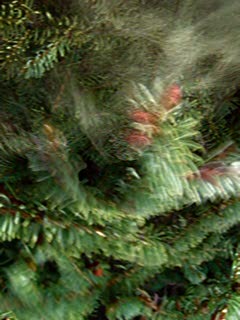
27. This is a frame from a Quicktime
movie
taken after tapping one of these affected buds.
|
|
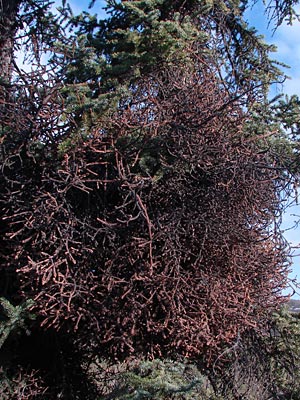
29. Late May view of the "witch's broom".
This broom is dead, there are no buds.
|
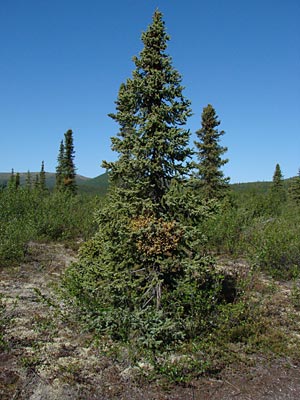
30. Mid-June view of an active "Witch's
broom"
|
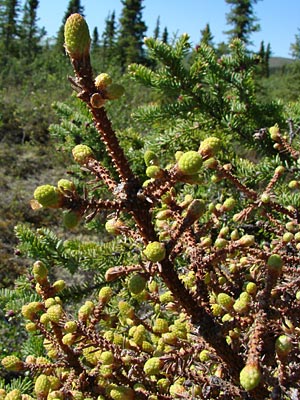
31. The fungus is just beginning to affect the
buds. Needles will form, the rust will cover
them and they will fall off.
|

32. View of the entire active "broom"
|
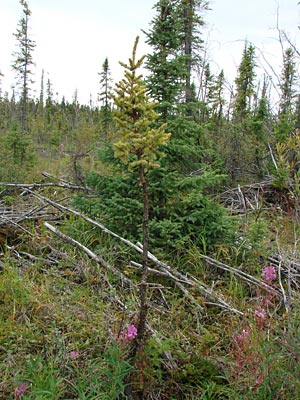
33. Late July photo of Spindly dying spruce
with a healthy spruce in the background.
|
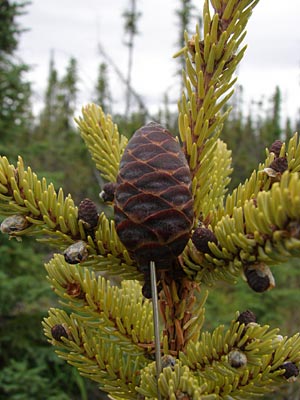
34. Cone from healthy tree in front of dying
tree. Note the difference in size.
|

35. Late September photo, the needles have
turned white and have fallen from the tree.
|
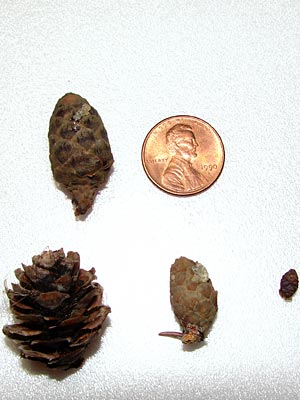
36. Top: a cone from the healthy spruce.
Bottom: cones from the dying spruce,
decreasing in age from left to right.
|
| 
37. Spruce pitch leaking from a damaged
area on a tree.
|

38. May 14, 2009. A very young black spruce.
|

39. February 28, 2009. Unopened Female cones
from 2008 with the remains of the male cones
on the lower branches.
Go
To Page 2
|




























